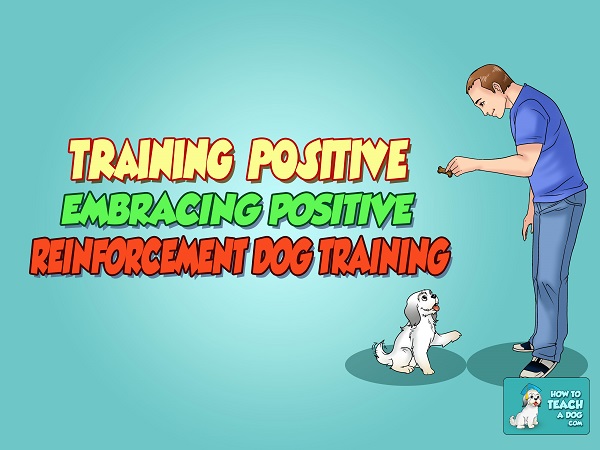
As with the art of teaching, when it comes to dog training, there are different methodologies to choose from. On one hand you have the punishment-based training, on the other hand, you have the reward-based training, also known as Positive Reinforcement. In this article you’ll learn about their difference, understand why choosing Positive Reinforcement over Punishment is the path to follow with your dog as well as get some tips on how to apply positive reinforcement correctly.
Punishment or Rewards? A No-Brainer Choice
Close your eyes and pretend to travel back in time when you were a school-age child. You are in line on your first day of school and they are assigning you to your new teachers. On one side, there is a teacher known for scolding her students harshly when they do something wrong and teaching them to behave through scare tactics and intimidation, on the other side there is a teacher known for understanding her students, providing them with opportunities to learn and who lavishly rewards wanted behaviors. Which teacher would you want to be assigned to? Most likely, you’ll pick the second one. Guess what? Your dog would too.
Reward-based training, also known as positive reinforcement consists of reinforcing wanted behaviors. Back to the school example, how would you feel if every time you did a good job your teacher would give you a super cool sticker? Most likely you would look forward to keeping up with your good work so you would get more stickers. And if you had a nice teacher as such, most likely years later, when you graduated, you even shed some tears and missed her dearly. Positive reinforcement training has similar effects on dogs. Actually, not only dogs. Dolphins, killer whales, walruses and sea lions reap the benefits of this training method too!
The Science Behind Positive Reinforcement Dog Training
B. F. Skinner, an American psychologist and behaviorist is known as the “father of operant conditioning.” He demonstrated how positive reinforcement works by placing a hungry rat in a special box that contained a special lever. When the rat moved around the box, at some point he accidentally knocked the lever which released a pellet of food. After some time, the rats learned that the action of pressing the lever released the food pellet, so the lever-pressing action was repeated more ad more. Skinner claimed “Behavior which is reinforced tends to be repeated, behavior which is not reinforced tends to die out-or be extinguished.”
In dog training, a common example of positive-reinforcement is giving your dog a cookie when he sits. The cookie informs your dog “yes, you got it right!” Because most dogs find cookies appealing, the sitting behavior will repeat over time. However, this isn’t a general rule of thumb which is why it’s important to learn how to apply positive-reinforcement correctly.
Five Tips on How to Apply Positive Reinforcement Correctly
In order to work, positive reinforcement needs to be applied correctly. In many cases, when this method doesn’t seem to work, it’s likely because mistakes are being made. If you are training on your own and progress isn’t made, a good place to start is to have a positive reinforcement trainer coach you. Remember that dog training is more a matter of training owners than dogs. Following are some common mistakes dog owners make when trying positive reinforcement.
1 – Reinforcement is a consequence that increases the dog’s behavior
If you give your dog a cookie when he sits, but the sitting behavior isn’t increasing you’ll first need to carefully evaluate if you’ re doing something wrong, if the place you are training is too distracting and then you’ll have decide if the cookie is really reinforcing. Your dog may have tooth pain and the cookie may be causing pain or your dog may be too fearful to feel comfortable enough to eat. Also, consider that if your dog just had a full meal, that cookie may not be as valuable as when he’s hungry. How would you feel if you just finished a five course meal at a dinner buffet and on the way back, in your mailbox you find that your boss thanked you for a job well done with a gift certificate for a free meal your favorite restaurant expiring that same evening?
2 – Reinforcement is subjective
What may be reinforcing to one dog, isn’t necessarily reinforcing to another dog. Just as some people may prefer flowers as rewards while others may prefer a box of chocolates or money, dogs have their personal preferences. Some dogs will do anything for toys, others may enjoy cuddles, but a great majority though like food. So when you are using rewards, make sure they are things your dog likes. Just because your neighbor’s dogs would do somersaults for game of tug, doesn’t mean your dog will too. If you’re not too sure what rewards your dog loves, experiment and you can always evaluate. If your dog appears motivated and the behavior is increasing, chances are, you nailed it.
3 – Reinforcement preferences may change based on context
Just because your dog likes something doesn’t mean he’ll like it in ALL circumstances. Yes, your dog may love pats as a reward for sitting when he’s been home alone all day and missing you, but he may care less when he’s around his buddies and all he want to do is play! In such a case, the biggest reward for sitting may be sending him off to play with his friends. Just as you may love a foot massage after standing up all day, doesn’t mean you would like one when you’re dining out!
4 – Reinforcement must occur immediately
If you’re training your dog to sit, you must make sure you reward your dog immediately. We are talking about split seconds here, right the moment you see your dog’s rear make contact with the floor. If you are late in rewarding your dog and give your dog the cookie right when he stands back up, you’ll reward him for getting up from sitting. In the training world there’s a saying “you get what you reward” so pay close attention to which action you’re rewarding! Here’s a tip if you want to improve your timing: learn the art of clicker training to mark desired behaviors.
5 – Watch what you reinforce!
It’s important to realize that dogs are constantly learning and this applies to both good behaviors and bad. Many undesirable dog behaviors are often inadvertently reinforced by owners without realizing it. If your dog barks to be let out and you immediately open the door, you guessed it, you just rewarded the barking. If your dog jumps on you to greet you when you come home, and you pet him, talk to him while he’s standing, you just rewarded jumping. Last but not least, consider that to a dog who has been home all day even negative attention may be rewarding. If for instance, you sit on the couch and your under-stimulated dog barks at you, scolding him or pushing away may be reinforcing, causing this behavior to repeat.
The Bottom Line
Positive reinforcement training paves the path towards trust, cooperation and a stronger bond between dog and owner. Because dogs are eager to learn and the training process is fun, dogs become willing participants to an enjoyable activity and the relationship between dog and owner is enriched rather than damaged. As seen, reaping the rewards of positive reinforcement ultimately provides a win-win situation for all!


